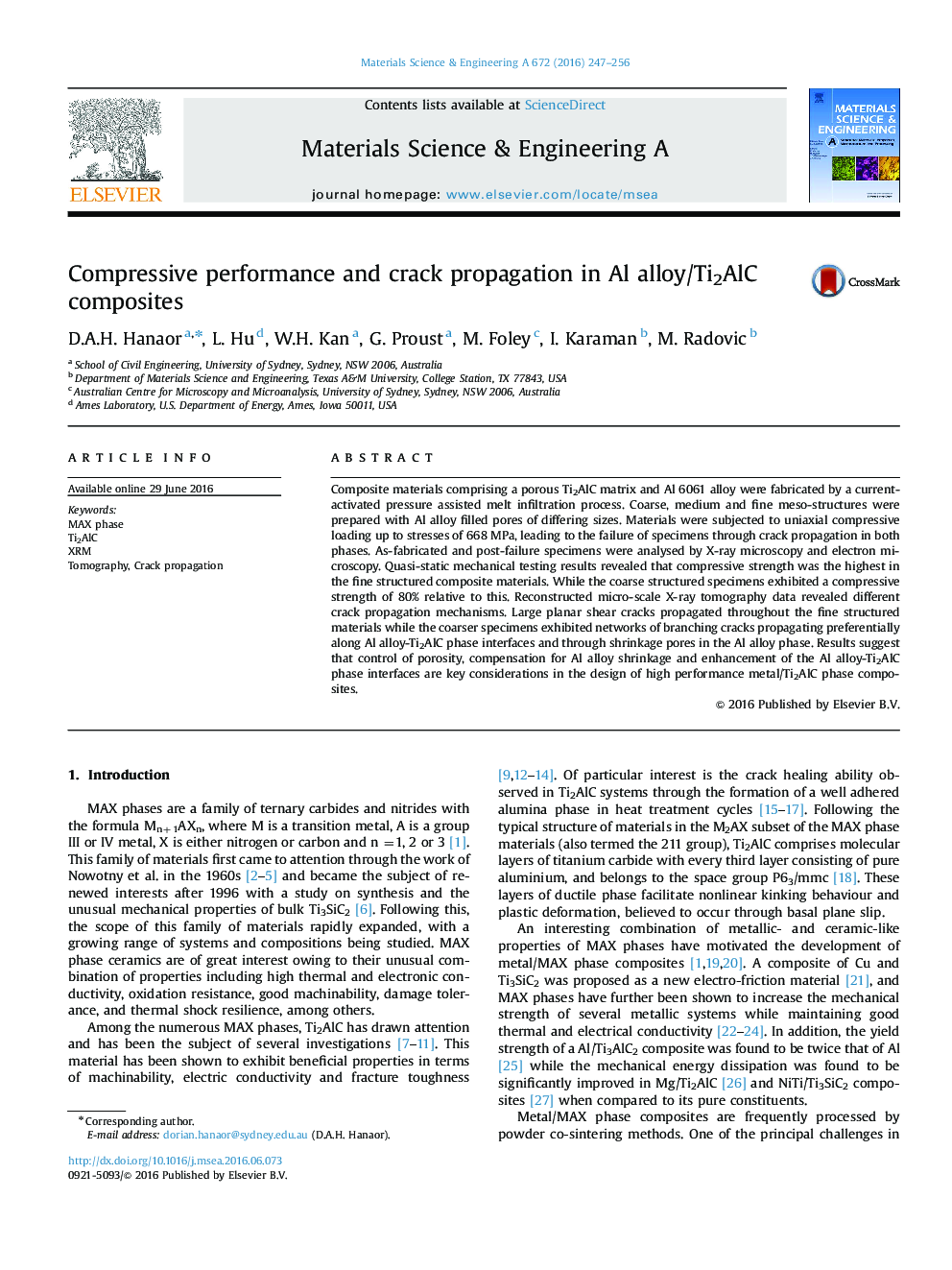| Article ID | Journal | Published Year | Pages | File Type |
|---|---|---|---|---|
| 7975298 | Materials Science and Engineering: A | 2016 | 10 Pages |
Abstract
Composite materials comprising a porous Ti2AlC matrix and Al 6061 alloy were fabricated by a current-activated pressure assisted melt infiltration process. Coarse, medium and fine meso-structures were prepared with Al alloy filled pores of differing sizes. Materials were subjected to uniaxial compressive loading up to stresses of 668 MPa, leading to the failure of specimens through crack propagation in both phases. As-fabricated and post-failure specimens were analysed by X-ray microscopy and electron microscopy. Quasi-static mechanical testing results revealed that compressive strength was the highest in the fine structured composite materials. While the coarse structured specimens exhibited a compressive strength of 80% relative to this. Reconstructed micro-scale X-ray tomography data revealed different crack propagation mechanisms. Large planar shear cracks propagated throughout the fine structured materials while the coarser specimens exhibited networks of branching cracks propagating preferentially along Al alloy-Ti2AlC phase interfaces and through shrinkage pores in the Al alloy phase. Results suggest that control of porosity, compensation for Al alloy shrinkage and enhancement of the Al alloy-Ti2AlC phase interfaces are key considerations in the design of high performance metal/Ti2AlC phase composites.
Related Topics
Physical Sciences and Engineering
Materials Science
Materials Science (General)
Authors
D.A.H. Hanaor, L. Hu, W.H. Kan, G. Proust, M. Foley, I. Karaman, M. Radovic,
